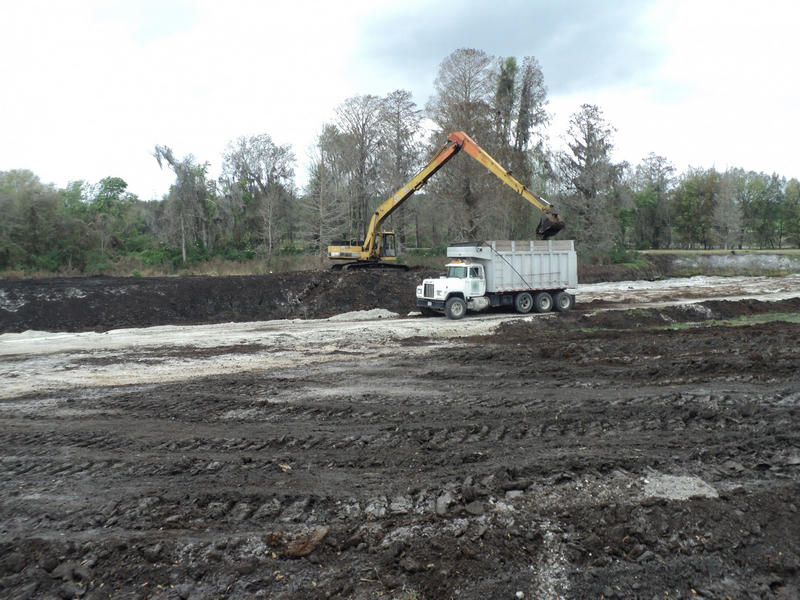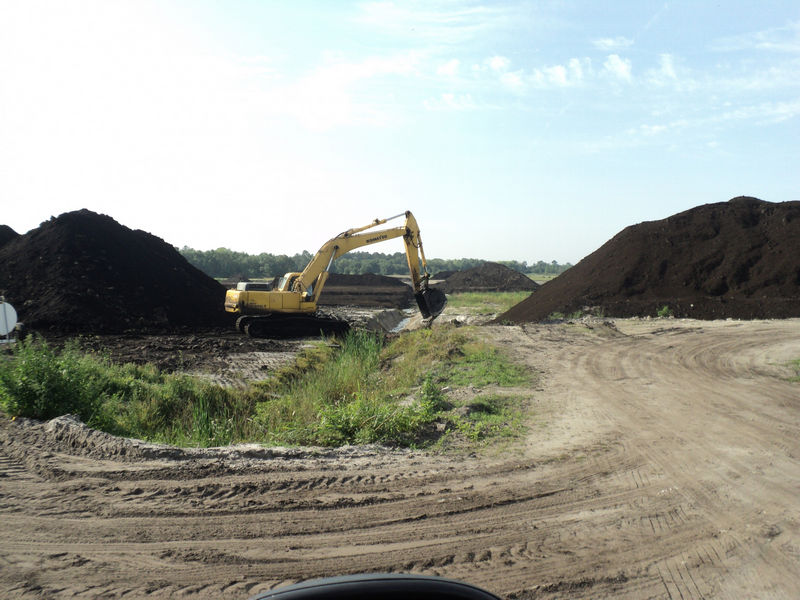The Mining and Mitigation Program administers reclamation and environmental resource/stormwater management permit programs for mining operations in Florida, including peat. Reclamation standards for peat mining are detailed in Part II of Chapter 211, Part III of Chapter 378, Florida Statutes (F.S.), and Chapter 62C-39, Florida Administrative Code (F.A.C.).
An Environmental Resource Permit (ERP) is also be required for peat mining projects. Environmental resource permitting standards are detailed in Part IV of Chapter 373, F.S. and Chapter 62-330, F.A.C.
Permits or authorizations from other local, state or federal agencies may also be required prior to mining.
What is peat?
Peat is a naturally occurring soil-like material primarily resulting from decomposing plants. It forms in a water-saturated environment where the rate of buildup of plant material exceeds the rate of decay. The rate of buildup of peat is difficult to measure and is affected by site-specific conditions. In Florida, the rate of peat buildup has been estimated to be less than 6 inches per 100 years.
Peat may be classified based on the percentage of plant fibers it contains. Florida’s horticultural industry requires peat with a high percentage of fibers for potting soils. Mucky (low fiber) peat may be used as a general soil amendment.
Where is peat mined in Florida?
Peat may be found throughout Florida. Most of the high-fiber peat producers are in Central Florida. The mine boundaries can be seen through Map Direct.
How is peat mined in Florida?
Prior to mining, the extraction area is surrounded by earthen dikes. Pumps are used to lower the water within the extraction area to dry the peat. The dry peat can be mined using typical excavating equipment.
The pumped water stays onsite in a containment system. This may include recharge ditches around the extraction area that will maintain water levels in adjacent wetlands and properties.
After mining is complete the dikes are contoured and vegetated. Mitigation for adverse impacts to wetlands is required.
What are the reclamation standards for peat mines?
The Florida Legislature requires reclamation of lands disturbed by the mining of peat. For mines that began after Oct. 1, 1986, all areas disturbed by mining must be reclaimed. "Existing mines” are mines where mining began on before Oct. 1, 1986. At existing mines, reclamation requirements apply only to new areas that were disturbed by mining after Jan. 1, 1989.
Reclamation means the reasonable rehabilitation of land where resource extraction has occurred (Chapter 378.403, F.S.). Areas subject to the reclamation requirements must be reclaimed after mining is complete. Debris, litter, junk, worn-out or unusable equipment or materials must be disposed of. The land must be contoured and stabilized to control erosion. Bare areas must be revegetated. Reclamation standards for peat mines are detailed in Part III of Chapter 378, F.S., and Chapter 62C-39, F.A.C. The forms used for the reclamation program and filing instructions may be obtained online.
Section 378.804, F.S., provides that an operator mining peat for agricultural purposes is not required to provide a notice of mining to the department. Reclamation at the mine must still meet all other requirements of the statutes and rules. This exemption does not apply to applications for ERP permits.
What permits are required for peat mines?
There is no comprehensive permit that covers all aspects of large projects, including mines. An applicant may have to consider the requirements of several regulatory agencies. Each agency may regulate only the specific activities based on authority granted by Congress, the Legislature or county commission. Prior to construction, the applicant must have all necessary federal, state and local approvals.
The Mining and Mitigation program reviews applications for Environmental Resource Permits (ERPs). Activities that typically require an ERP include dredging and filling located in, on or over wetlands or other surface waters, as well as the construction of structures. The permit governs the construction, alteration, operation, maintenance, repair, abandonment and removal of stormwater management systems, including dams, impoundments, reservoirs, appurtenant works and works.
The rules used to implement the ERP are authorized under Chapter 373, F.S. Chapter 62-330, F.A.C., the Applicant's Handbook, Volume I, and Applicant's Handbook, Volume II, outline the standards and criteria for ERPs. ERPs are also subject to Chapter 403, F.S., which governs activities that may pollute ground or surface waters, including wetlands. The forms used for the ERP program and filing instructions may be obtained online.
Applicants who intend to mine high-quality (high fiber) peat for use in the horticultural industry may use alternative permitting and mitigation provisions. These provisions are described in Chapter 62-348, F.A.C. No less than 80% of the extracted peat must be high-quality peat, and 80% of the high-quality peat must be used by the horticultural industry in products that incorporate renewable or recycled materials.
How does the department monitor activities at peat mines?
The ERP and state of Florida 404 will require the operator to provide the department with an annual report describing activities for the previous calendar year, and proposed mining and reclamation activities for the current year. The ERP or state of Florida 404 permit may also require additional monitoring reports. Routine compliance inspections are conducted by department staff to ensure that mining and reclamation activities follow permit and reclamation rules.
How can you obtain public records?
You can obtain a list of applications for permits and conceptual reclamation plans that are currently under review with the department. This will provide the application number which can be used when requesting public records.
The Florida Department of Environmental Protection maintains public records in an electronic document management system. You can obtain public records relating to applications, plans, reports and inspections through either of these websites:
You may also request public records by contacting the Mining and Mitigation Program. The contact information is below.
For More Information
Florida Department of Environmental Protection
Mining and Mitigation Program
2600 Blair Stone Road, Mail Station 3577
Tallahassee, FL 32399
850-245-8336 (phone) / 850-245-8356 (fax)
MiningAndMitigation@FloridaDEP.gov





